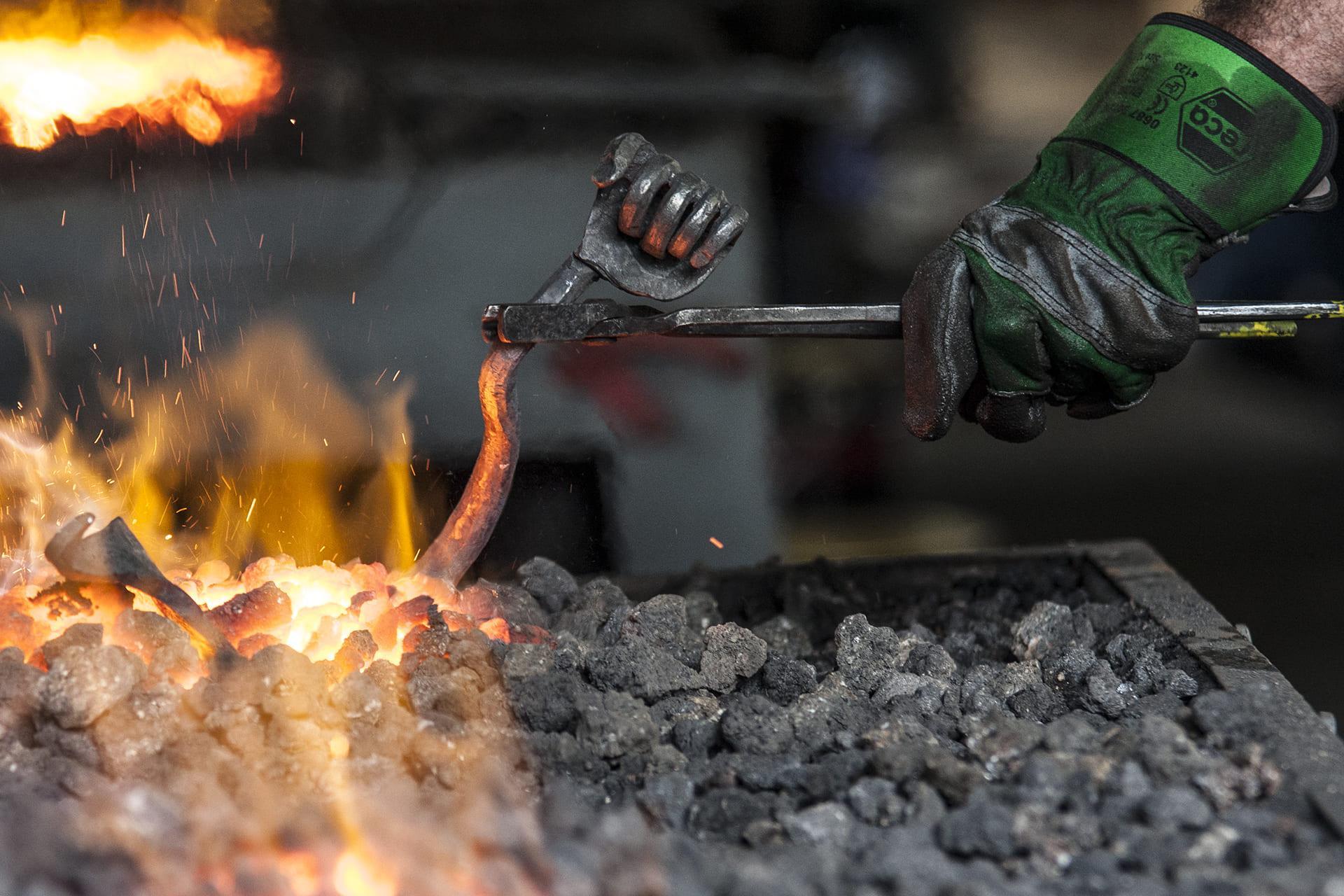by Alessandra Fochi
The final preparations for the twenty-fifth edition of the ‘European Biennial of Blacksmith Art’ to be held in Stia from 31 August to 3 September 2023 are in full swing. The event, which can be defined as the most important event in the blacksmith sector at European level, is now one of the most ‘qualifying’ events for the Casentino valley and, at each edition, attracts thousands of visitors to the town of Stia.
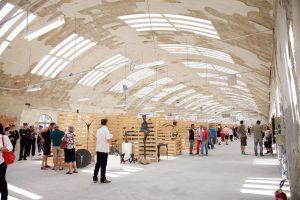
The first steps that led to the current event known as the “International Biennial of Iron” were taken in 1976 on the initiative of Pier Luigi Della Bordella, the Arezzo antique dealer Ivan Bruschi and former Mayor of Stia Vittoriano Frulloni. It was organized and set up in Piazza Tanucci di Stia an exhibition-market of wrought iron handicrafts, which for the first two editions took place annually and then, immediately after, biennial given the organizational and economic commitment that became evident.
Over time the event has been enriched with many other collateral initiatives, open to international participation, revised in its structure and finally also hosted in a new location inside the vaulted hall of the ancient woolen mill of Stia, taking the name of “Lanificio – empty space incubator of ideas”. It presents itself as an invitation and opportunity for blacksmiths from all over the world to express, through the art of forging, their creativity, finding within the exhibition a privileged showcase, a meeting point, comparison and visibility among a wide, varied and inclusive audience of external experts and stakeholders.
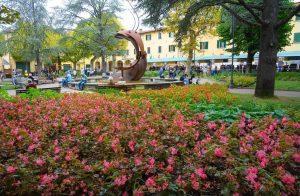 At the same time, however, numerous other proposals have accompanied the market exhibition, making the “Biennale” a multifaceted event that finds in the processing of iron the common thread that unites all the planned activities.
At the same time, however, numerous other proposals have accompanied the market exhibition, making the “Biennale” a multifaceted event that finds in the processing of iron the common thread that unites all the planned activities.
Among these, the one that meets the greatest consensus of the public and artisans is the ‘World Forging Championship’ which sees, at each edition, the participation of about 200 blacksmiths and an influx of thousands of visitors. The current form of the event represents the evolution of the extemporaneous forging test held for the first time in 1981, on the occasion of the 4th ‘Mostra mercato d’artigianato del ferro battuto’, consisting in the creation of a work on a free theme in the presence of the public. The current championship takes place, however, according to a precise regulation set by the biennial association which provides, among other things, for each year a specific theme. The one set for this edition is: “Connections”.
The artifact must be entirely made in extemporaneous, without being able to use previously manufactured parts. The object must obviously be made of iron, forged according to the traditional technique, that is, without the aid of machinery, but small parts in other materials can be inserted. The test, which is structured in a double path, individual and in groups, takes place in Piazza Mazzini di Stia where 12 workstations are set up, each equipped with its own forge and equipped with work tools as well as various bars of different types of iron.
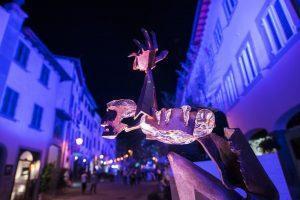 The historic venue of the market exhibition, the beautiful Piazza Tanucci di Stia, called the living room of the Casentino, has instead become the ideal setting for the ‘International Sculpture Competition’ which began in 2017 and has therefore reached its 4th edition. Born with the intention of enriching the Biennale with an initiative of great artistic quality and enhancing the town square, it translates into the preparation of a sculptural path of iron works made by master blacksmiths according to the theme proposed for the competition, different at each edition. The theme chosen for this year is “Lightness”, which, associated with the material of iron, seems almost an oxymoron and therefore pleasant surprises are expected.
The historic venue of the market exhibition, the beautiful Piazza Tanucci di Stia, called the living room of the Casentino, has instead become the ideal setting for the ‘International Sculpture Competition’ which began in 2017 and has therefore reached its 4th edition. Born with the intention of enriching the Biennale with an initiative of great artistic quality and enhancing the town square, it translates into the preparation of a sculptural path of iron works made by master blacksmiths according to the theme proposed for the competition, different at each edition. The theme chosen for this year is “Lightness”, which, associated with the material of iron, seems almost an oxymoron and therefore pleasant surprises are expected.
The works in competition must by regulation be unpublished projects and are evaluated by a special international jury composed of master blacksmiths, architects and / or designers who work with the control and validation of a notary. The first 3 qualified candidates are awarded and the winning works remain with the association of the Biennale, intended to be used as street furniture in different areas of the country. Many of these can be admired walking through the streets and squares of Stia.
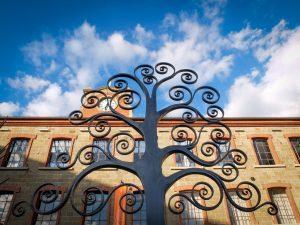 Another competition is the “Design and Drawing Competition” which sees young artists / designers / architects engaged in the graphic design of iron objects that can then be made by skilled craftsmen and be functional to the urban decoration of the municipality of Pratovecchio Stia. The subject chosen for this edition is “selfie frames” to be placed within the municipal territory and structured so as to accommodate the face of two people and in the background a landscape, a building or a work of art.
Another competition is the “Design and Drawing Competition” which sees young artists / designers / architects engaged in the graphic design of iron objects that can then be made by skilled craftsmen and be functional to the urban decoration of the municipality of Pratovecchio Stia. The subject chosen for this edition is “selfie frames” to be placed within the municipal territory and structured so as to accommodate the face of two people and in the background a landscape, a building or a work of art.
Visitors to the Biennale will also be able to retrace its history and works through the ‘Iron Museum’ set up in a room of the historic ‘Lanificio’ of Stia, which houses a significant sample of the rich heritage produced over the years by blacksmiths who took part in the various editions of the forging competition, and still going to explore the forging school within the ‘Laboratory of arts and crafts’ which was realized through the recovery of a old railway building located near the Stia station.
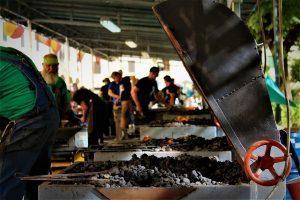
Rich, varied and of ever-increasing quality at each edition is therefore the ‘menu’ proposed by the Biennale event that finds its main and surprising resource in the extraordinary teamwork of many volunteers.
Info: www.biennaleartefabbrile.it
